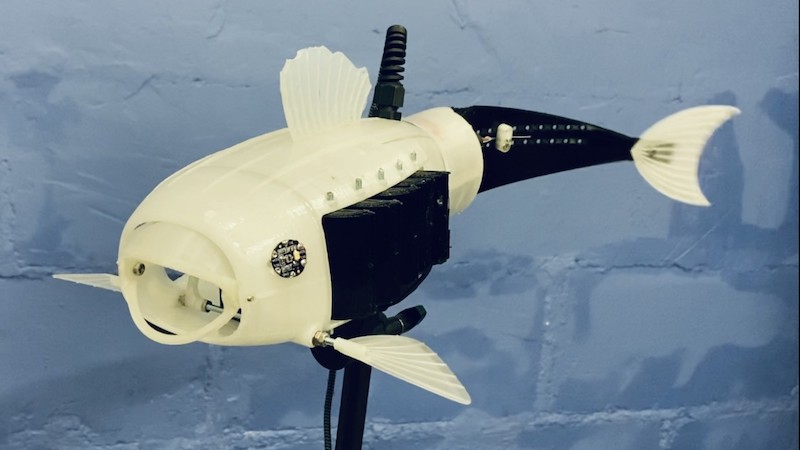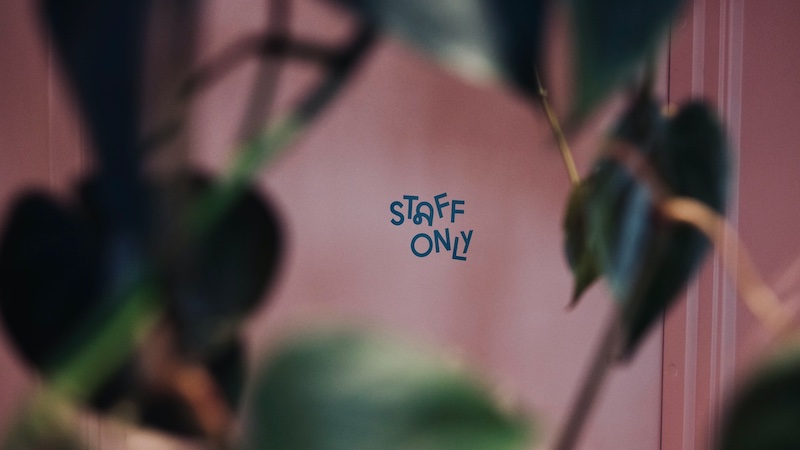This robotic fish is supposed to rid the oceans of microplastics
For a robotics design competition, chemistry student Eleanor Mackintosh designed a robotic fish to rid water bodies of microplastics. Her idea brought her first prize. Now a prototype has emerged.
Microplastics: These are the smallest plastic particlesthat end up in the oceans via our wastewater. There they attract poisons and are eaten by animals. Consume through the natural food chain also people an average of around five grams of microplastics per week.
predictions of World Economic Forum show that plastic could weigh more than fish by 2050. Research and science are therefore trying to stop the spread of microplastics in all areas.
The same applies to chemistry student Eleanor Mackintosh from Great Britain. With her idea, she starts where the effects of the plastic problem are worst – namely in the water.
Contents
New robotic fish wins robotics competition
Mackintosh therefore designed a robotic fish for a competition that collects microplastics from bodies of water. With her idea, she won first prize Natural Robotics Contestwhich was advertised for the first time by the University of Surrey in 2022.
Inspired by the animal and plant world
Lead scientist Robert Siddall and his team sought bio-inspired robotic designs to make the world a better place. That means: The animal and plant world should be inspiration for the designs of the robots.
Non-specialists were also able to submit their ideas. All that was needed to enter was a description of the design and a drawing. A jury of British and European research institutes then selected the best design. In a scientific paper the researchers explained why they chose Mackintosh’s design:
This design was chosen not only because of the detailed considerations that went into it and its application, but also because the robot’s purpose as a tool to clean up the oceans was the most frequently suggested use case for all competition entries.
This is how the robotic fish Gilbert filters microplastics out of the water
After the competition, Siddall’s robotics experts built a real prototype of the robotic fish, which they affectionately called Gilbert. “Gill” means gill.
Using the CAD process, the engineers first created a virtual 3D model, which they then printed out using a 3D printer.
Gilbert has a length of about 50 centimeters. It gets its propulsion from motorized fin modules on the rear part of its body. With them he can swim in the ocean. Appropriate pectoral fin modules help it control pitch and depth.
Robotic fish filters microplastics through nylon mesh
He also takes in water through his mouth at the same time. When its mouth is full, it closes it and uses an artificial tongue to push the mass of water through its gills. There is a nylon net that catches tiny plastic particles.
In addition, Gilbert is equipped with sensors that monitor underwater turbidity and light levels. The robo-fish also has what is known as an inertial measurement unit, or IMU for short, which tracks its movements in the water. And it also glows in the dark.
First tests in the lake
For the first tests, the scientists working with Sidall released the robotic fish in a lake in Guildford, England. Although Gillbert swam well, the researchers want to improve his drive.
Currently, the prototype also requires a hard-wired remote control. In the future, however, it should also be able to swim autonomously. In addition, the revised version of the robo-fish should be able to filter even smaller particles. In addition, Gilbert has so far been able to absorb the particles. However, he has no way of analyzing them directly.
Robot fish initially only a prototype
As already mentioned, Eleanor Mackintosh’s robot fish only exists as a prototype. The scientists from England have not yet announced whether and how the project should develop in the future.
But even if Gilbert isn’t implemented on a large scale for now, he does warn that microplastic pollution urgently needs a solution.
The researchers conducted the Natural Robotics Contest for the first time in 2022. The scientists want to announce the next competition in spring 2023.
Also interesting:



